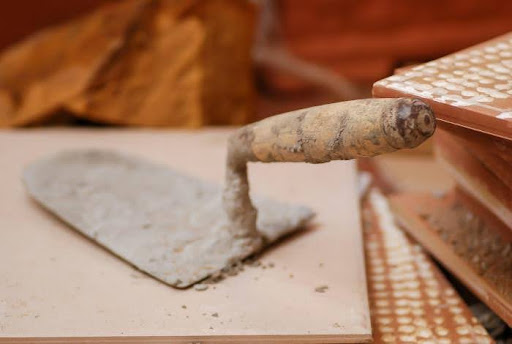Tile grouts are used to help seal the joints and fill the space between tiles. They may seem like a minor thing, but they contribute to the overall beauty of your flooring.
However, tile grouts can also cause problems and it’s even more prevalent if you’ve chosen the wrong type. This is why it’s best to consult with a professional first prior to installation.
Here are some common tile grout problems that you might experience:
- Dirty grout
Newly-applied grout looks immaculately clean. But dirt can easily accumulate and settle on and in the grout over time. One of the most common causes of dirty grout is dirty mop water. Water used to clean the floor becomes muddy and if you continue to use it, the dirt will go into the grout and settle there.
Grout is naturally porous and this is why dirt can easily adhere to it as well as absorb into it. This can make grout cleaning a difficult task at the best of times. After a few years, the accumulated dirt build-up can make grout cleaning near impossible. It will most likely require heavy duty cleaning in order for the grout to be restored and looking near new again. Worse case, replacing old grout might be the only option but this is only necessary if there is significant permanent staining or if the grout has any structural defects such as major cracking. Source: Protector Clean
- Powdery Grout
Powdery grout is a common problem and it is caused by not using enough water when initially making the mixture. The only solution for this is to scrap the old and start anew. Dig out the old grout and replace it with properly mixed grout.
- Pinholes
Ironically, pinholes in grout is caused by too much water in the grout mix. Once the water is dried or evaporated, it leaves behind tiny pockets. Thankfully, in order to fix this issue, you do not need to rip out the old grout. You can simply dampen the areas with holes, and then use your finger to push new grout into them. Have a damp cloth handy to wipe away any excess. Source: Grout Restoration Works
- Hollow Tiles
Hollow or loose tiles often occur when tile adhesive isn’t bonding the tiles to the wall or floor. This is usually an installation issue when there are gaps where adhesive is missing, under the tiles.
Hollow tiles will eventually break, crack or lift from the surface and can be resolved through a tile repair specialist injecting adhesive under the tiles. In most cases however, the only solution to this problem is to re-tile.
- Mold
The shower and bathroom offers the ideal environment for mold to grow, making it the most common tile problem. This is due to wet and highly humid areas with poor ventilation, making them a breeding ground for mold. What’s more, soap residue and body oils also create a food source that encourages mold growth.
Once mold growth in porous grout joints occur, no amount of scrubbing can get rid of it. Using chemicals also does not get rid of mold and will just eat away at the grout which can just cause more damage.
Mold in shower and bathroom tiles is often caused by a leak. A small hole in grout or cracks in the shower corners can rapidly lead to water build-up and mold ingress. In this case, it’s best to call a leak detection or bathroom cleaning specialist to identify and analyze the cause of mold before proceeding to remove it. Source: O’Shea’s Cleaning Services
Hopefully, this information has helped you learn more about the tile grout you’ll be using as well as the common problems that come with it. If you need more clarification or some help on this topic, don’t hesitate to contact us – just call the number listed below!



